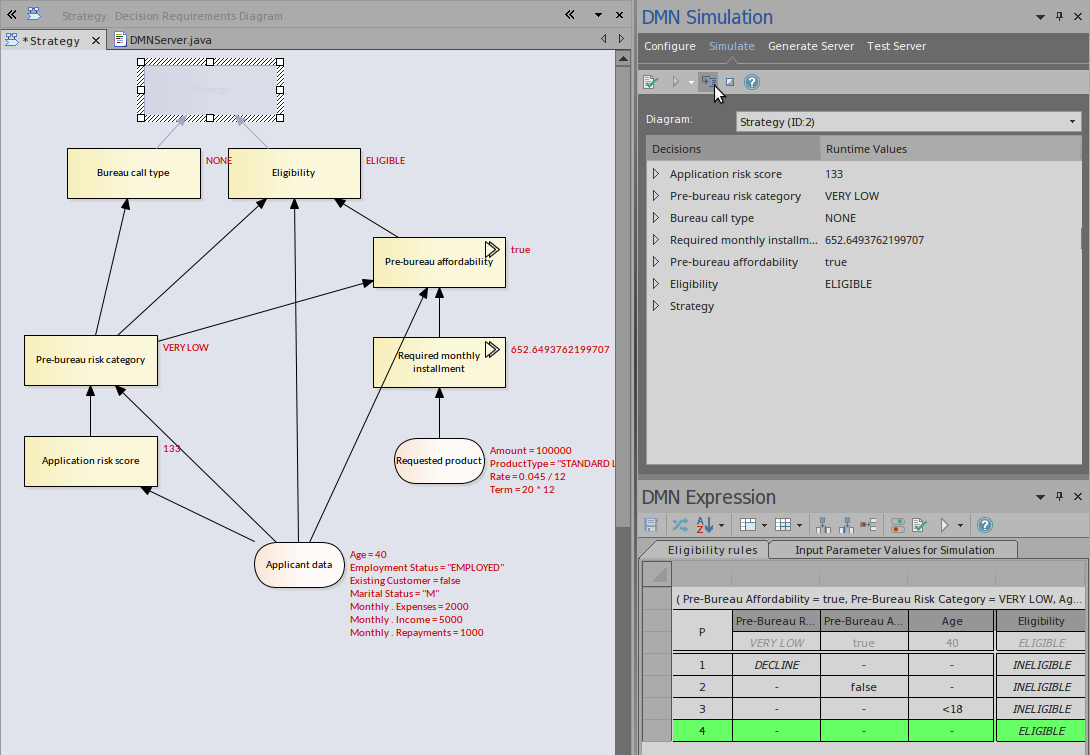| Prev | Next |
DMN Simulation
After a Decision Model is created, the user may configure a DMN Simulation artifact and Validate/Run/Step/Debug the model.
By switching data sets, the user may do what-if analysis to ensure the model meet the requirement of business.
The user may also generate code for the DMN Server. Currently, 4 languages are supported: Java/JavaScript/C++/C#.
In order to simulate BPMN and DMN together, EA's BPSim Execution Engine accept a DMN Server in Java language. Before the BPSim Execution engine execute, we need to ensure the DMN Server is tested. Luckily, we can Run/Debug the testing for Java DMN Server easily in EA.
Configure DMN Simulation

Simulate DMN Model

In this example, decision "Eligibility" returns a string "ELIGIBLE". Decision "Eligibility" invokes BusinessKnowledgeModel "Eligibility rules" by binding the parameters:
- Bind "Pre-Bureau Affordability" to dependent decision "Pre-bureau affordability" (runtime value: true)
- Bind "Pre-Bureau Risk Category" to dependent decision "Pre-bureau risk category" (runtime value: VERY LOW)
- Bind "Age" to a field "Age" in dependent input data "Applicant data" (runtime value: 40)

The BusinessKnowledgeModel "Eligibility rules" has a hit policy P (Priority), meaning that multiple rules can match, but only one hit should be returned, the ordering of the list of output values is used to pecify the (decreasing) priority.
In this run time case (Pre-Bureau Affordability = true, Pre-Bureau Risk Category = VERY LOW, Age = 40), only one rule with output "ELIGIBLE" matches.

